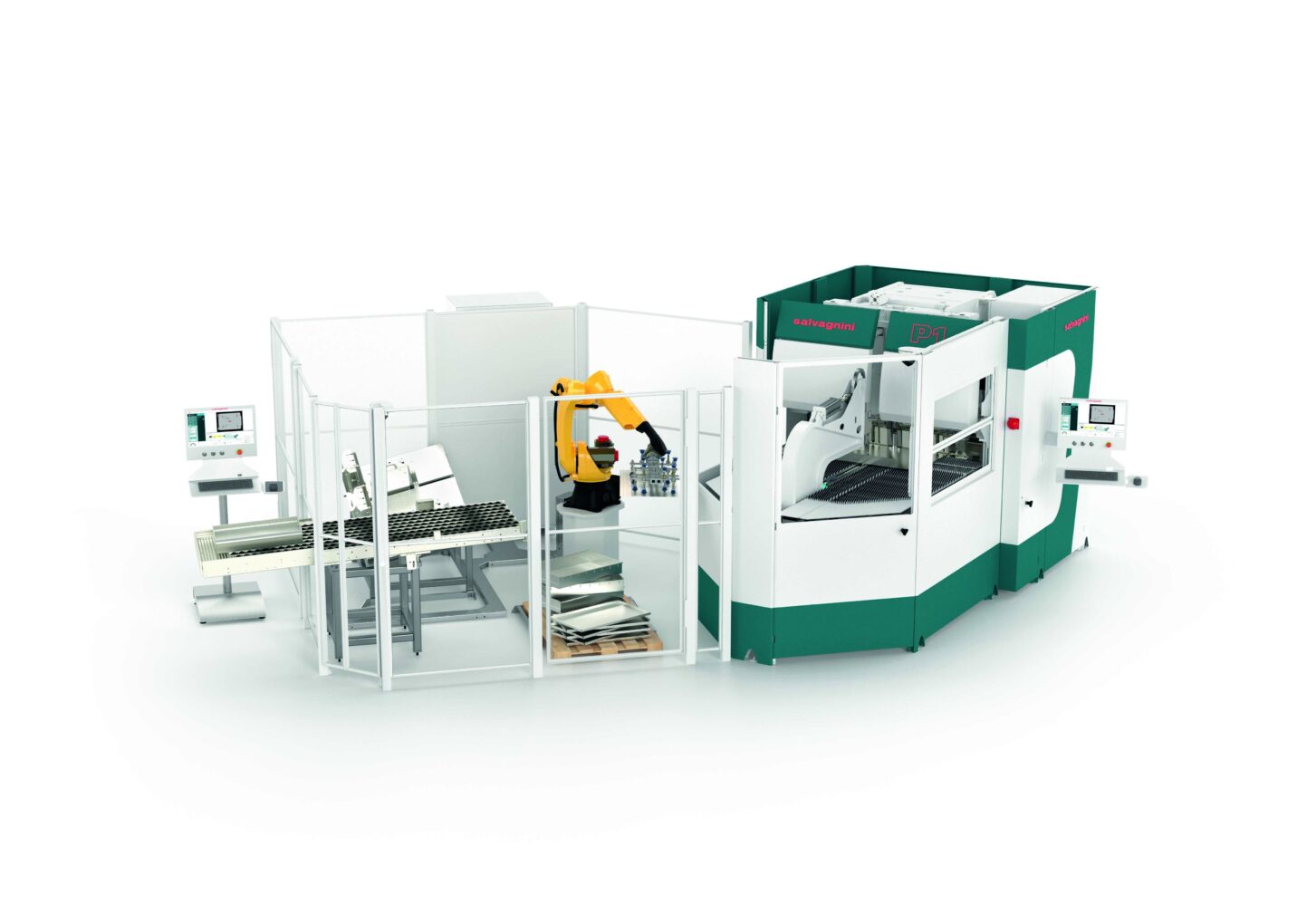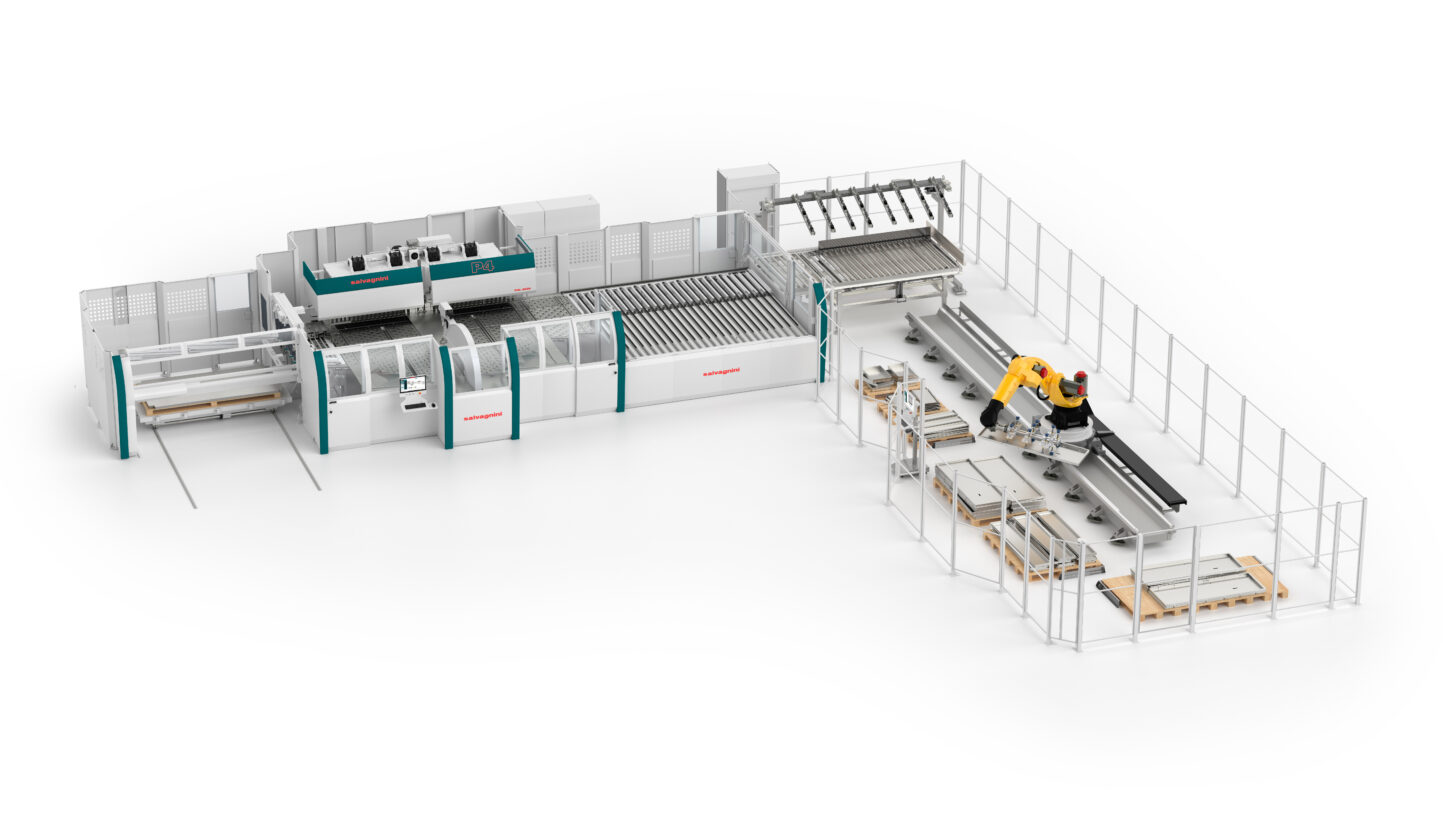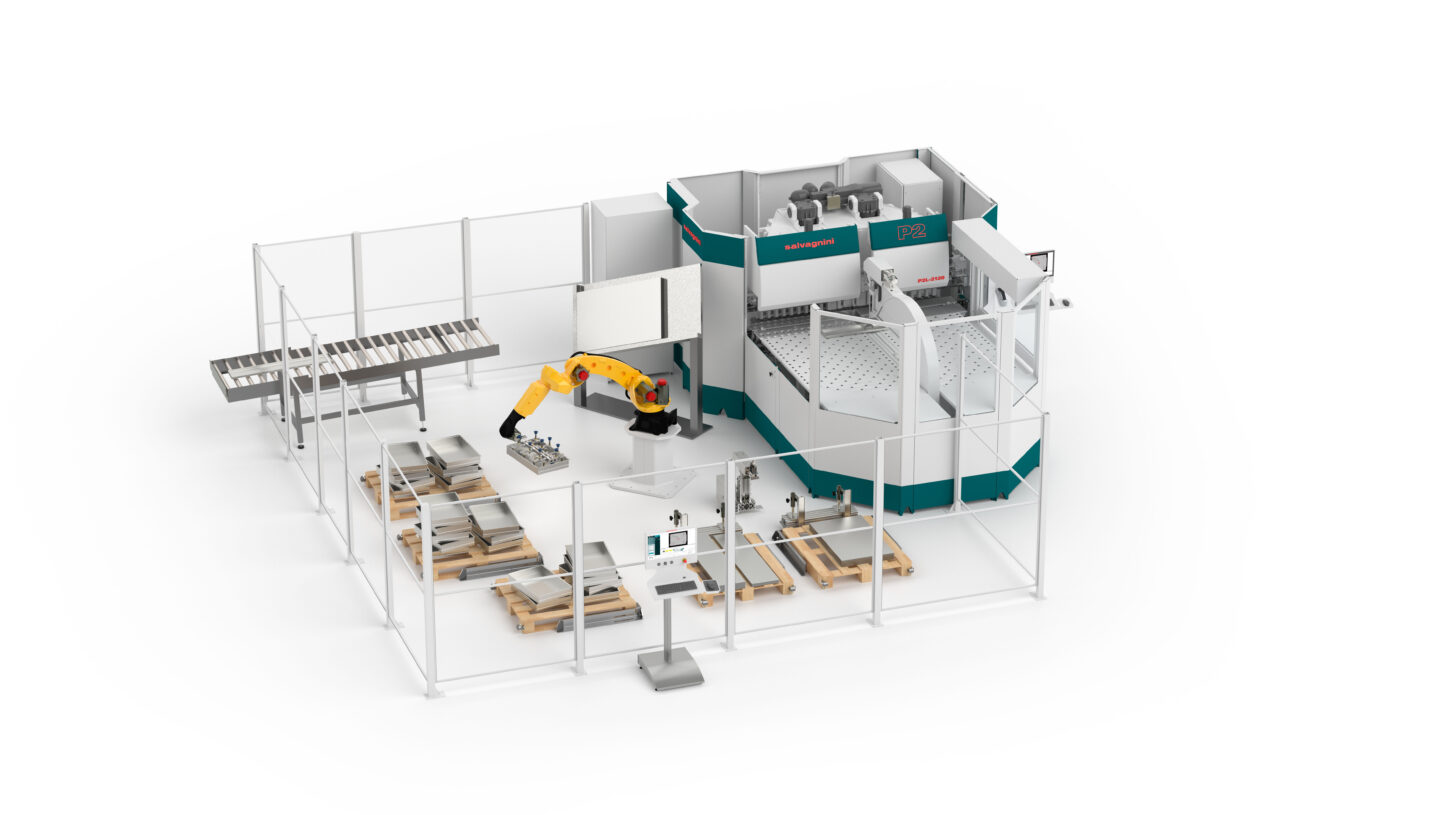
Robotization is not simple, but it remains a very current trend. New installations of robots in the manufacturing industry grew by 13% YOY in 2021, while the robots in use number over three million. This is why Salvagnini is introducing P-Robot, a new application which combines a panel bender with a robot to produce kits, batches and single parts autonomously.
“We have been involved with robotics applied to sheet metal processing for some time,” explains Nicola Artuso, Salvagnini Product Manager for bending technologies. “We wanted a smart solution which was much simpler than those already on the market: simpler to program, simpler to use, and able - if possible - to exponentially improve the flexibility and productivity of our panel benders. And we also wanted a solution suited to our compact panel benders, not just the automatic ones. With P-Robot, we are sure we have achieved our goal.”
The rationale for the design of P-Robot aimed to solve some of the issues typical of traditional robotized solutions, as well as meeting market requirements: it offers a compact and modular layout, is perfectly integrated on both the hardware and the software side, makes robot programming as simple as possible too, and allows for a certain level of customization so as to respond to specific production requirements.
“This P-Robot incorporates a P1, but we can also apply it to the P2 and P4,” Artuso continues. “The P1 is our electric panel bender, with energy consumption of less than 3 kW and a footprint of just 8 m2. It is a standard panel bender, just like the robot – a choice which has great advantages in terms of certifications. For the robot, we have chosen a partner which allows us to move around in proximity to the working area in complete safety: this translates into an extremely compact layout. The robot is equipped with a flippable gripping device, fitted with suction cups on two sides, for picking up the bent part and immediately positioning the new part to be bent, incycle. This gripping device therefore allows optimization of the sheet loading/unloading cycles, improvement of production rates, and a reduction in waiting times. We have not overlooked modularity and adaptivity either: according to the specific needs of each customer, their products, and an in-depth feasibility study, we can offer solutions with loading/unloading assistance only, or else more complex systems providing for automatic movement of the pallets or third-party integrations – for example with work centers for labeling, laser marking, riveting, welding, and corner forming.”

Complex industrial automation systems generally require significant integration between the individual technologies they are composed of. From this point of view, P-Robot ensures optimum management of the process because Salvagnini has perfect knowledge of all the movements of the panel bender, having designed it, and has a high-level view of those of the robot as well. The robot essentially becomes an option of the panel bender, with positive effects on programming too, which is perhaps the main advantage of P-Robot.
“As we said, the panel bender is a standard model: like any other Salvagnini panel bender, it is generally programmed in the office,” Artuso adds. “The program, made with STREAMBEND, can be used without the need for modifications on either P-Robot or on panel benders without robots, obviously as long as these are Salvagnini panel benders. On board the machine, the MOVE software acquires the panel bending program, from which it generates the dimensions of the flat part and the finished panel that it uses to automatically generate the robot trajectories. The operator will simply need to confirm or, if necessary, modify a small number of checking positions to complete the programming of the robot. MOVE manages the intermediate movements of the robot autonomously too, and the operator is only required to make a reduced set of movements. This is, in short, a fully-fledged smart teaching system, which makes offline robot programming redundant.”

A further strength of P-Robot is its eclectic nature: it is not an isolated or closed system. P-Robot extends the flexibility and productivity of Salvagnini panel benders because it allows the best strategy to be chosen, based on the current production needs. On unmanned shifts, or in production contexts where a single operator monitors numerous systems, P-Robot naturally works in R2R (robot to robot) mode, loading, unloading and, if necessary, stacking the parts. But this is not an exclusive strategy: the same P-Robot can work in different modes, seamlessly and without re-tooling. In R2H (robot to human) mode, it is responsible solely for loading the flat part, whereas the operator is responsible for unloading the panel. This is an advantageous strategy if the operator must completethe processing of the panel on a different workstation – for example with a press brake or a welding machine. In H2R (human to robot) mode, it is the operator who will load the flat part onto the working area, and the robot will unload the panel at the end of the cycle: this strategy is useful for managing extremely diversified batch-one production. Without forgetting that the panel bender nevertheless remains available for any work managed completely by the operator.
“In order to summarize the concept, P-Robot defines a new paradigm of the panel bender with robot configuration, maximizing its flexibility and productivity. But P-Robot is also an automation, because it automates some steps of the panel bending process and, like all automations, can contribute to improving efficiency and reducing labor costs. But P-Robot is not limited to this. Its great benefit is that it is not necessary to choose a specific production strategy in the design phase. It can solve different requirements: large batches, small batches, kits, batch-one, but also ownstream integrations, total automation, partial automation, or no automation, as required. We are sure that the market will immediately grasp the potential of P-Robot and confirm that we have made all the right choices,” Artuso concludes.
www.salvagnini-america.com